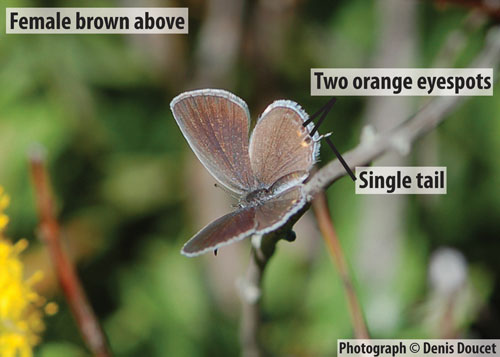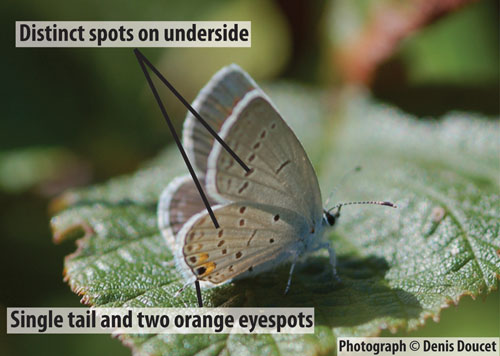Eastern Tailed-Blue (Cupido comyntas)
Description: A small blue butterfly with a thin hair-like tail on each hindwing, males are purplish-blue above and females are dark brown. The margin of the hindwing above has two to three black spots, these often have an orange crescent above them. The underside is greyish, with conspicuous black spots. Close to the tail are two more prominent black spots, each capped by conspicuous orange crescents. Eastern Tailed-Blue is very similar to Western Tailed-Blue. The latter species has more pointed wings, is typically paler and more chalky, and on the hindwing underside has less distinct black and orange markings. Wingspan: 16 to 26 mm.
Maritime Distribution: Prior to the Atlas is was known only from west of the Saint John River in New Brunswick. For Atlas results click here.
Provincial Ranks: NB: S3S4. NS: S3?. PEI: SNR.
Flight Period: June to October, likely two generations. Most records are second generation from August and September.
Host Plant: A variety of legumes (Fabaceae), including clovers (Trifolium spp.) and Cow Vetch (Vicia cracca).
Notes: This species can be found in a wide variety of open habitats, usually flying over the host plant. So far, most records from the Maritimes are from August and September, but in areas where this species is common there is also an earlier generation. It is possible these late individuals represent strays or the progeny of strays from Maine where it is more common. It may be, at present, colonizing the Maritimes as climate change makes this a more hospitable place for them to live.


